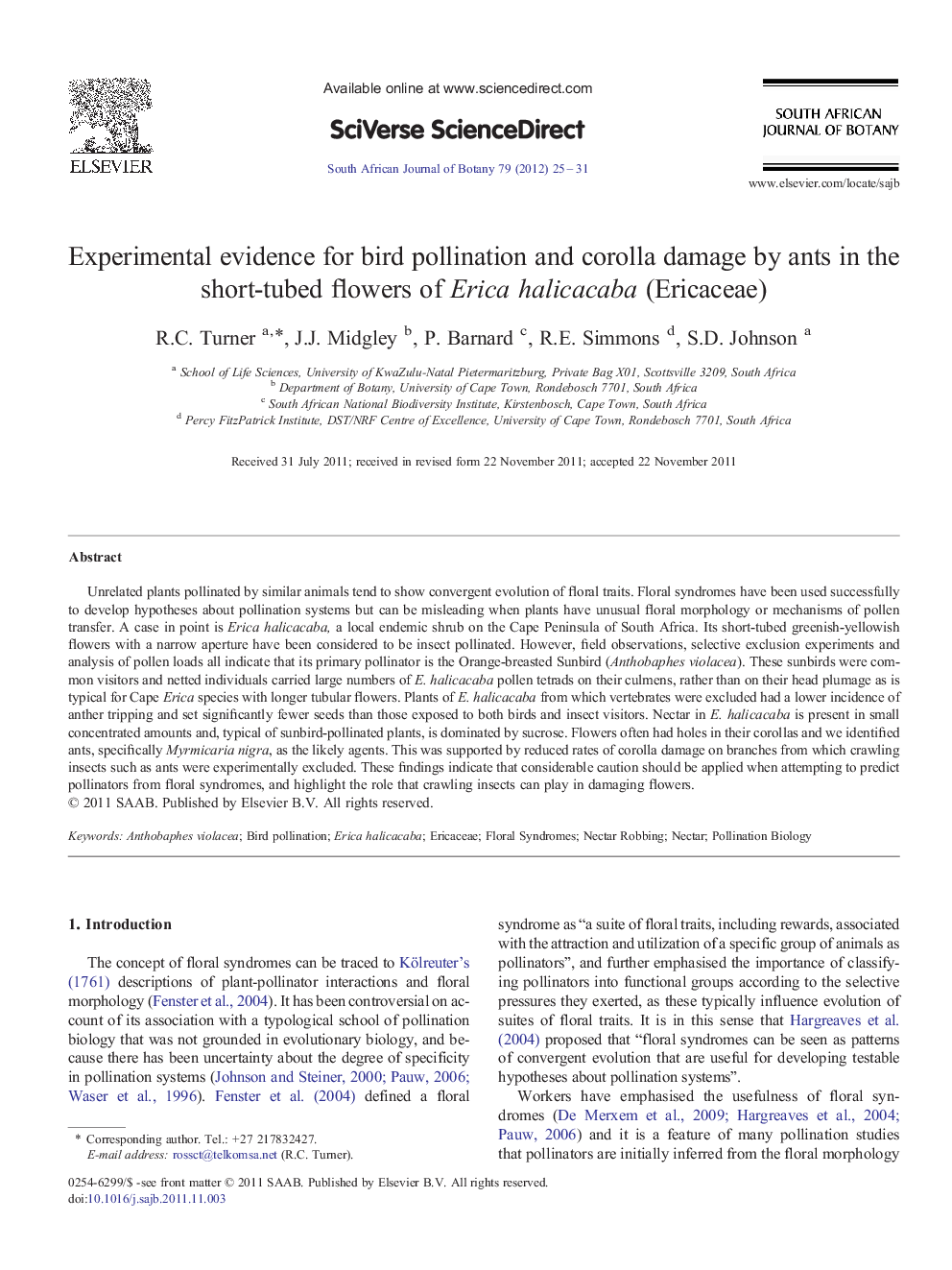| Article ID | Journal | Published Year | Pages | File Type |
|---|---|---|---|---|
| 4521086 | South African Journal of Botany | 2012 | 7 Pages |
Unrelated plants pollinated by similar animals tend to show convergent evolution of floral traits. Floral syndromes have been used successfully to develop hypotheses about pollination systems but can be misleading when plants have unusual floral morphology or mechanisms of pollen transfer. A case in point is Erica halicacaba, a local endemic shrub on the Cape Peninsula of South Africa. Its short-tubed greenish-yellowish flowers with a narrow aperture have been considered to be insect pollinated. However, field observations, selective exclusion experiments and analysis of pollen loads all indicate that its primary pollinator is the Orange-breasted Sunbird (Anthobaphes violacea). These sunbirds were common visitors and netted individuals carried large numbers of E. halicacaba pollen tetrads on their culmens, rather than on their head plumage as is typical for Cape Erica species with longer tubular flowers. Plants of E. halicacaba from which vertebrates were excluded had a lower incidence of anther tripping and set significantly fewer seeds than those exposed to both birds and insect visitors. Nectar in E. halicacaba is present in small concentrated amounts and, typical of sunbird-pollinated plants, is dominated by sucrose. Flowers often had holes in their corollas and we identified ants, specifically Myrmicaria nigra, as the likely agents. This was supported by reduced rates of corolla damage on branches from which crawling insects such as ants were experimentally excluded. These findings indicate that considerable caution should be applied when attempting to predict pollinators from floral syndromes, and highlight the role that crawling insects can play in damaging flowers.
► We investigate bird pollination and floral robbery in Erica halicacaba. ► We use exclosure experiments, bird mist-netting and observation to determine the avian pollinator. ► We use predator exclusion experiments to determine that ants rob flowers.
